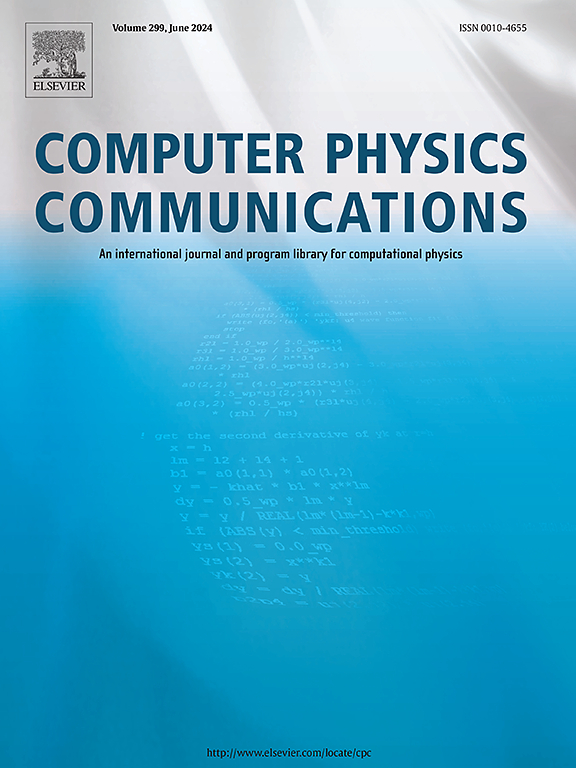WaterLily.jl: A differentiable and backend-agnostic Julia solver for incompressible viscous flow around dynamic bodies
IF 7.2
2区 物理与天体物理
Q1 COMPUTER SCIENCE, INTERDISCIPLINARY APPLICATIONS
引用次数: 0
Abstract
Integrating computational fluid dynamics (CFD) solvers into optimization and machine-learning frameworks is hampered by the rigidity of classic computational languages and the slow performance of more flexible high-level languages. In this work, we introduce WaterLily.jl: an open-source incompressible viscous flow solver written in the Julia language. An immersed boundary method is used to enforce the effect of solid boundaries on flow past complex geometries with arbitrary motions. The small code base is multidimensional, multiplatform and backend-agnostic, i.e. it supports serial and multithreaded CPU execution, and GPUs of different vendors. Additionally, the pure-Julia implementation allows the solver to be fully differentiable using automatic differentiation. The computational cost per time step and grid point remains constant with increasing grid size on CPU backends, and we measure up to two orders of magnitude speed-up on a supercomputer GPU compared to serial CPU execution. This leads to comparable performance with low-level CFD solvers written in C and Fortran on research-scale problems, opening up exciting possible future applications on the cutting edge of machine-learning research.
睡莲。[j]绕动体不可压缩粘性流动的可微后端不可知Julia解
将计算流体动力学(CFD)求解器集成到优化和机器学习框架中受到经典计算语言的刚性和更灵活的高级语言的缓慢性能的阻碍。在这个作品中,我们介绍了睡莲。jl:用Julia语言编写的开源不可压缩粘性流求解器。采用浸入边界法对具有任意运动的复杂几何形体的流动施加实体边界的影响。小代码库是多维的,多平台的和后台无关的,也就是说,它支持串行和多线程的CPU执行,以及不同厂商的gpu。此外,纯julia实现允许求解器使用自动微分完全可微。随着CPU后端网格大小的增加,每个时间步和网格点的计算成本保持不变,并且与串行CPU执行相比,我们在超级计算机GPU上测量了高达两个数量级的加速。这使得用C和Fortran编写的低级CFD求解器在研究规模问题上的性能可以与之媲美,在机器学习研究的前沿开辟了令人兴奋的未来应用。
本文章由计算机程序翻译,如有差异,请以英文原文为准。
求助全文
约1分钟内获得全文
求助全文
来源期刊

Computer Physics Communications
物理-计算机:跨学科应用
CiteScore
12.10
自引率
3.20%
发文量
287
审稿时长
5.3 months
期刊介绍:
The focus of CPC is on contemporary computational methods and techniques and their implementation, the effectiveness of which will normally be evidenced by the author(s) within the context of a substantive problem in physics. Within this setting CPC publishes two types of paper.
Computer Programs in Physics (CPiP)
These papers describe significant computer programs to be archived in the CPC Program Library which is held in the Mendeley Data repository. The submitted software must be covered by an approved open source licence. Papers and associated computer programs that address a problem of contemporary interest in physics that cannot be solved by current software are particularly encouraged.
Computational Physics Papers (CP)
These are research papers in, but are not limited to, the following themes across computational physics and related disciplines.
mathematical and numerical methods and algorithms;
computational models including those associated with the design, control and analysis of experiments; and
algebraic computation.
Each will normally include software implementation and performance details. The software implementation should, ideally, be available via GitHub, Zenodo or an institutional repository.In addition, research papers on the impact of advanced computer architecture and special purpose computers on computing in the physical sciences and software topics related to, and of importance in, the physical sciences may be considered.
 求助内容:
求助内容: 应助结果提醒方式:
应助结果提醒方式:


